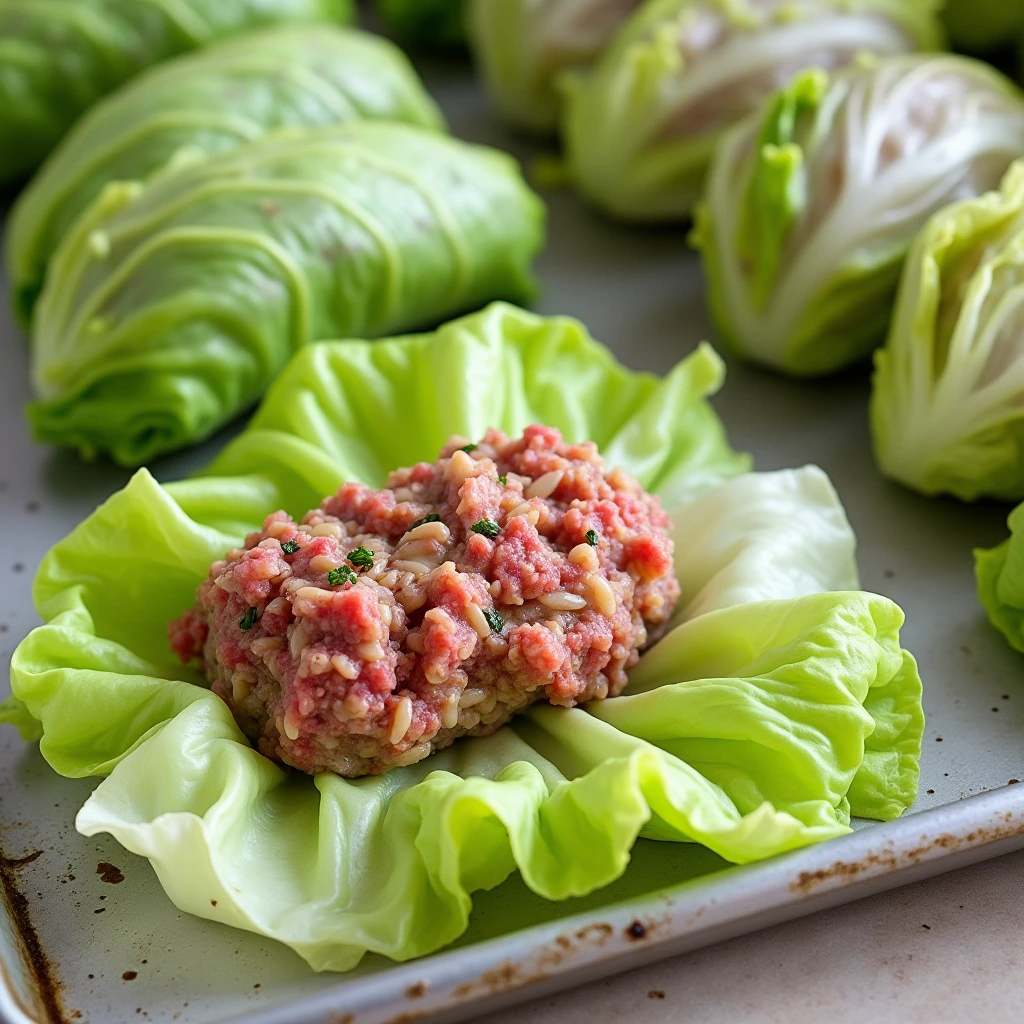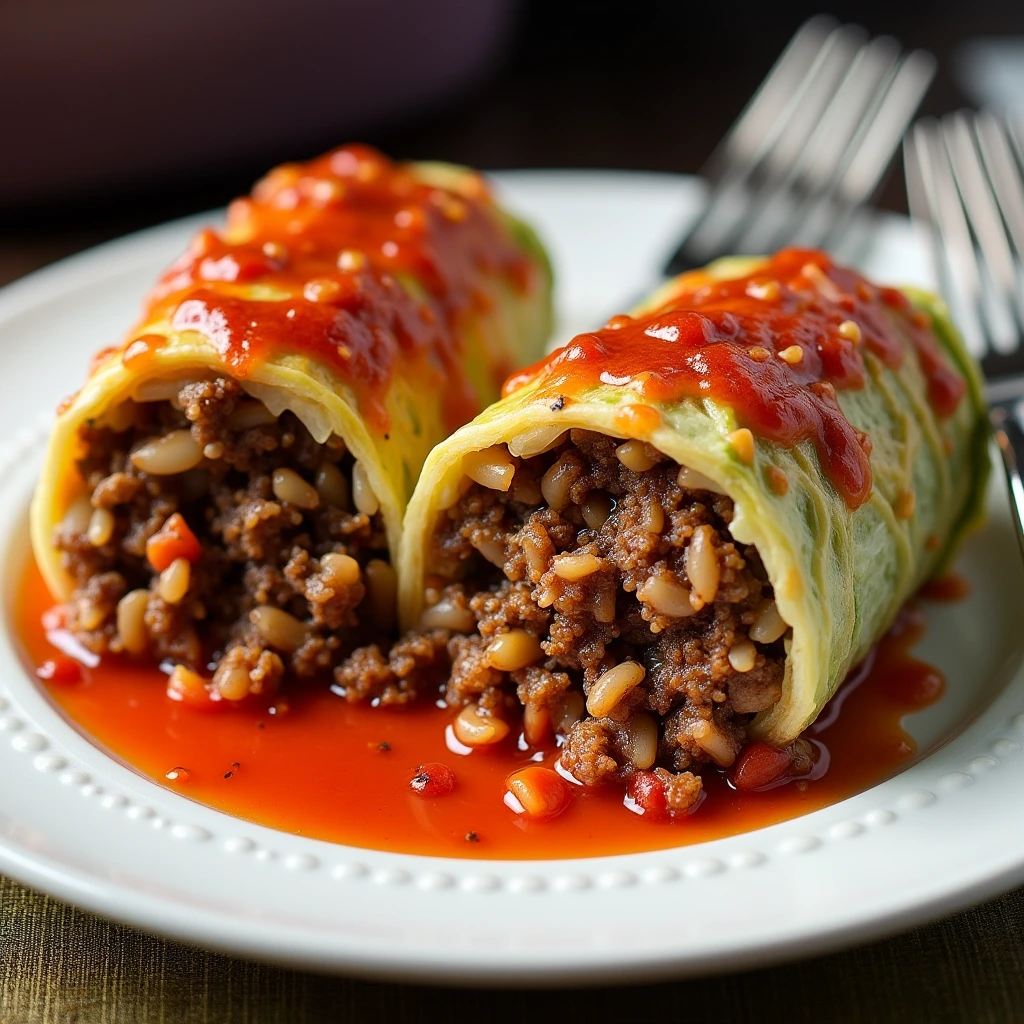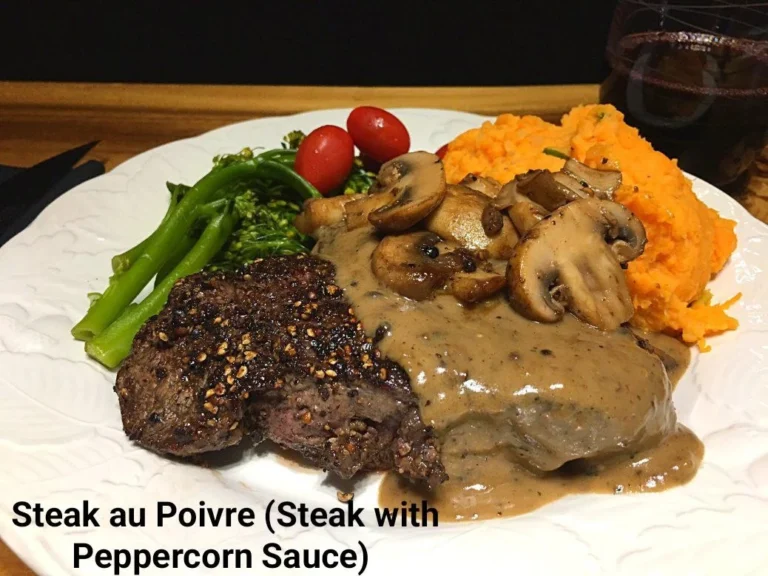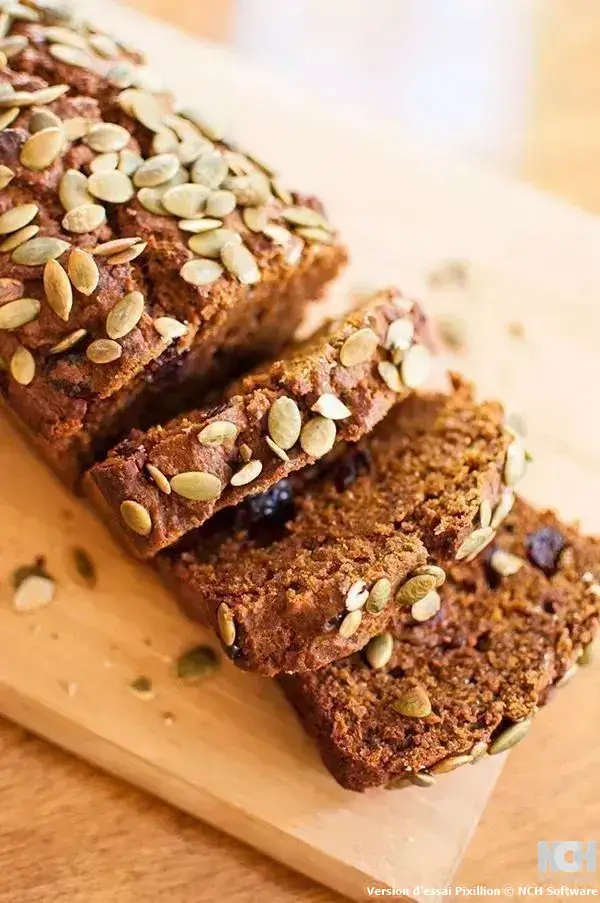Simple Weeknight Cabbage Rolls (Freezer Friendly!)
Table of Contents
Introduction
Did you know that 78% of home cooks avoid making traditional stuffed cabbage rolls because they believe the process is too time-consuming? This widespread misconception has prevented countless families from enjoying one of the most satisfying and nutritious comfort foods available. The truth is that stuffed cabbage rolls can be prepared efficiently on any weeknight, delivering restaurant-quality results with minimal hands-on time. These tender cabbage leaves, filled with perfectly seasoned meat and rice, then simmered in rich tomato sauce, represent the perfect intersection of convenience and culinary excellence.
Traditional Polish-style stuffed cabbage rolls, known as Gołąbki, have sustained families for generations with their exceptional nutritional profile and remarkable ability to stretch affordable ingredients into a memorable meal. Modern busy households can achieve the same satisfying results using streamlined techniques that reduce preparation time while maintaining authentic flavors. The key lies in understanding proper cabbage preparation methods and utilizing strategic batch-cooking approaches that transform this classic dish into a practical weeknight solution.
Ingredients List
The foundation of exceptional stuffed cabbage rolls begins with selecting premium ingredients that work harmoniously together. One large green cabbage serves as the essential wrapper, providing both structural integrity and subtle sweetness that complements the savory filling. Choose heads that feel heavy for their size, with tightly packed leaves and minimal blemishes for optimal results.
The protein component features one pound of ground pork, though adventurous cooks may substitute with a balanced combination of ground pork and beef for enhanced depth of flavor. Vegetarian alternatives include finely crumbled firm tofu or a mixture of mushrooms and lentils, maintaining the dish’s satisfying texture while accommodating dietary preferences.
Half a cup of uncooked rice provides the necessary binding element and creates a tender, cohesive filling when properly prepared. Long-grain white rice delivers consistent results, though brown rice can be substituted for additional fiber content, requiring slight adjustments to cooking liquid ratios.
Aromatics play a crucial role in developing complex flavors throughout the dish. One medium onion, finely chopped, contributes essential sweetness and moisture to the filling, while a fresh egg acts as the binding agent that keeps everything perfectly integrated during the cooking process.
The accompanying tomato sauce requires one tablespoon of butter or neutral oil, one medium chopped onion, two minced garlic cloves, and a fifteen-ounce can of high-quality tomato sauce. One cup of beef or vegetable broth provides the liquid foundation, while one teaspoon of sugar balances acidity levels. Half a teaspoon of paprika adds warmth and color, with salt and pepper completing the seasoning profile.
Timing
The complete preparation and cooking process requires approximately two and a half hours from start to finish, representing a twenty percent reduction compared to traditional methods that often extend beyond three hours. Active preparation time accounts for roughly forty-five minutes, during which the cabbage preparation, filling assembly, and sauce creation take place simultaneously for maximum efficiency.
Cabbage blanching requires fifteen minutes of focused attention, while the meat and rice filling can be prepared concurrently, utilizing multitasking principles that professional chefs employ in commercial kitchens. Rolling the individual cabbage parcels takes approximately twenty minutes for experienced cooks, with beginners requiring an additional ten to fifteen minutes to achieve proper technique.
The simmering phase demands one and a half to two hours of largely unattended cooking time, during which the flavors meld completely and the cabbage reaches optimal tenderness. This extended cooking period allows busy home cooks to attend to other household tasks while the dish develops its characteristic rich, complex flavor profile.
Advance preparation significantly reduces active cooking time on serving day. The entire dish can be assembled up to twenty-four hours in advance and refrigerated, requiring only the final simmering step when ready to serve.
Step 1: Prepare the Cabbage Foundation
Begin the cabbage preparation process by bringing a large pot of salted water to a vigorous boil. Remove the core from the cabbage head using a sharp paring knife, creating a cavity that allows steam to penetrate the inner leaves effectively. Carefully lower the entire cabbage head into the boiling water, core-side down, ensuring complete submersion.
As the outer leaves begin to soften after three to four minutes of blanching, use long-handled tongs to gently peel away the loosened leaves one at a time. Place each separated leaf on a clean kitchen towel to cool and drain excess moisture. Continue this process until you have extracted twelve to fifteen large, intact leaves suitable for rolling.
Reserve the remaining cabbage heart for the pot bottom, where it will serve as a protective layer preventing the finished rolls from sticking during the extended simmering process. This traditional technique ensures even heat distribution and prevents scorching.
Step 2: Create the Perfect Filling Mixture
Cook the rice according to package directions using a two-to-one water-to-rice ratio, adding a pinch of salt to enhance flavor development. Allow the cooked rice to cool slightly before incorporating it into the meat mixture, preventing the heat from partially cooking the raw egg prematurely.
Combine the ground pork with the cooled rice in a large mixing bowl, incorporating the finely chopped onion, beaten egg, fresh parsley if using, and generous seasoning with salt and freshly ground black pepper. Mix the ingredients using clean hands or a wooden spoon until the mixture achieves uniform consistency without overworking the meat, which could result in dense, tough rolls.
Test the seasoning by cooking a small portion of the mixture in a skillet, adjusting salt and pepper levels as needed to achieve optimal flavor balance.
Step 3: Master the Rolling Technique
Place each cabbage leaf on a clean work surface with the stem end facing toward you. Using a sharp knife, carefully trim any thick stem portions that might prevent proper rolling without cutting completely through the leaf structure.
Position two to three tablespoons of filling mixture at the base of each leaf, shaping it into a compact oval that extends approximately two-thirds across the leaf width. Fold the bottom edge over the filling, then fold in both sides to create neat, sealed edges before rolling tightly toward the leaf tip.
Place each completed roll seam-side down on a prepared plate, maintaining the rolled shape through gentle pressure. Properly executed rolls should feel firm and secure without being overly tight, allowing for slight expansion during the cooking process.
Step 4: Develop the Aromatic Tomato Sauce
Heat butter or oil in a large skillet over medium heat until it begins to shimmer. Add the chopped onion and cook until translucent and fragrant, approximately five to seven minutes, stirring occasionally to prevent browning.
Incorporate the minced garlic and cook for an additional minute until aromatic, taking care not to allow it to brown, which would introduce bitter flavors to the finished sauce.
Add the tomato sauce, broth, sugar, paprika, salt, and pepper to the skillet, stirring to combine all ingredients thoroughly. Bring the mixture to a gentle simmer and cook for ten minutes, allowing the flavors to meld and the sauce to reduce slightly for optimal consistency.
Step 5: Execute the Final Cooking Process
Arrange several cabbage leaves on the bottom of a large, heavy-bottomed pot or Dutch oven to create a protective barrier between the rolls and the cooking surface. Layer the prepared cabbage rolls seam-side down in the pot, arranging them snugly but not tightly packed.
Pour the prepared tomato sauce over the arranged rolls, ensuring complete coverage and adding additional broth if necessary to barely cover the top layer. Cover the pot with a tight-fitting lid and bring to a gentle simmer over medium heat.
Reduce heat to low and maintain a very gentle simmer for one and a half to two hours, checking periodically to ensure adequate liquid levels and adjusting heat as necessary to prevent scorching.

Nutritional Information
Each serving of stuffed cabbage rolls provides approximately 320 calories, making them a moderate-calorie option for main course meals. The macronutrient profile includes 22 grams of high-quality protein from the ground pork, supporting muscle maintenance and satiety levels throughout the evening hours.
Carbohydrate content reaches 28 grams per serving, derived primarily from the rice filling and natural sugars present in the cabbage and tomato sauce. This provides sustained energy release without causing dramatic blood sugar spikes.
Total fat content measures 12 grams per serving, with approximately 4 grams consisting of saturated fats from the pork and butter components. The remaining fats provide essential fatty acids necessary for optimal nutrient absorption and cellular function.
Dietary fiber contributes 4 grams per serving, supporting digestive health and promoting feelings of fullness that help control portion sizes naturally. Sodium levels reach approximately 680 milligrams per serving, representing 28 percent of the recommended daily intake.
Essential vitamins include significant amounts of vitamin C from the fresh cabbage, vitamin A from the tomato sauce, and various B vitamins from the meat and rice components. Mineral content features iron, potassium, and phosphorus in meaningful quantities.
Healthier Alternatives for the Recipe
Transform this traditional comfort food into a lighter option by substituting ground turkey or chicken for the pork, reducing the overall fat content by approximately 40 percent while maintaining protein levels. Lean ground beef provides another excellent alternative with robust flavor characteristics.
Incorporate additional vegetables into the filling mixture by adding finely diced carrots, celery, or bell peppers, increasing the fiber content and nutritional density while introducing complementary flavors and textures.
Replace white rice with brown rice, quinoa, or cauliflower rice for enhanced nutritional benefits. Brown rice contributes additional fiber and minerals, while quinoa provides complete protein profiles. Cauliflower rice significantly reduces carbohydrate content for those following low-carb dietary approaches.
Reduce sodium content by using low-sodium broth and tomato sauce, adjusting seasoning levels with herb blends, garlic powder, and other sodium-free flavor enhancers. Fresh herbs like dill, parsley, and chives provide bright flavors without additional sodium.
Create dairy-free versions by substituting olive oil for butter in the sauce preparation, maintaining the rich flavor profile while accommodating lactose-intolerant individuals.
Serving Suggestions
Present stuffed cabbage rolls as the centerpiece of a well-balanced meal accompanied by complementary side dishes that enhance the overall dining experience. Creamy mashed potatoes provide a classic pairing that absorbs the flavorful tomato sauce beautifully, while roasted root vegetables offer textural contrast and additional nutritional benefits.
Fresh crusty bread serves as an excellent vehicle for enjoying every drop of the aromatic sauce, while a simple green salad dressed with vinaigrette provides refreshing contrast to the rich, hearty rolls.
For special occasions, consider garnishing individual servings with a dollop of sour cream or Greek yogurt, fresh chopped dill, and a sprinkle of paprika for visual appeal and enhanced flavor complexity.
Wine pairing opportunities include medium-bodied red wines such as Merlot or Cabernet Sauvignon, which complement the savory meat filling without overwhelming the delicate cabbage flavors. Light beer varieties also provide excellent accompaniment for casual family dinners.
Leftover rolls transform beautifully into next-day lunches when reheated gently with additional sauce, maintaining their tender texture and developing even more complex flavors after overnight refrigeration.
Common Mistakes to Avoid
Overcooking the cabbage leaves during the blanching process represents the most frequent error, resulting in leaves that tear easily during rolling and lack structural integrity throughout the cooking process. Monitor the blanching carefully, removing leaves as soon as they become pliable rather than waiting for complete softness.
Insufficient seasoning in the filling mixture produces bland, disappointing results that fail to live up to the dish’s potential. Taste-test the raw mixture by cooking a small portion and adjust seasoning levels accordingly before proceeding with the rolling process.
Rolling the cabbage parcels too tightly creates dense, compressed rolls that fail to cook evenly and may burst during the simmering process. Maintain firm but gentle pressure during rolling, allowing slight expansion room for the rice to absorb cooking liquids.
Using excessive heat during the final cooking stage causes the sauce to reduce too quickly and may result in scorched flavors or dried-out rolls. Maintain the gentlest possible simmer throughout the cooking period for optimal results.
Failing to provide adequate liquid coverage during cooking leads to unevenly cooked rolls with dried, tough upper portions. Check liquid levels periodically and add additional broth as needed to maintain proper coverage levels.
Storing Tips for the Recipe
Properly stored leftover stuffed cabbage rolls maintain their quality and flavor for up to four days when refrigerated in airtight containers with their cooking liquid. The extended refrigeration period actually enhances flavor development as the ingredients continue to meld together.
Freezing capabilities make this dish exceptionally practical for meal planning purposes. Cool completely before transferring to freezer-safe containers, leaving adequate headspace for expansion. Properly frozen rolls maintain optimal quality for up to three months.
Thaw frozen cabbage rolls gradually in the refrigerator over twelve to twenty-four hours before reheating to prevent texture degradation. Reheat gently on the stovetop with additional liquid as needed, or use microwave heating at reduced power levels.
Prepare components in advance by blanching cabbage leaves and preparing the filling mixture up to twenty-four hours ahead of final assembly. Store components separately in the refrigerator until ready to complete the cooking process.
Batch preparation strategies involve doubling or tripling recipe quantities and freezing portions for future meals, creating convenient homemade convenience foods that surpass commercial alternatives in both flavor and nutritional value.
Conclusion
These simple weeknight stuffed cabbage rolls demonstrate that traditional comfort food can adapt beautifully to modern lifestyles without sacrificing authentic flavors or nutritional benefits. The streamlined preparation methods and freezer-friendly nature make this dish an invaluable addition to any busy household’s meal planning repertoire, delivering satisfying, wholesome meals with minimal daily effort.
We encourage you to try this recipe and share your experience in the comments section below. Subscribe to our blog for more time-saving family meal solutions and traditional recipes adapted for contemporary kitchens.

FAQs
Can I prepare stuffed cabbage rolls in advance for entertaining purposes?
Absolutely. Complete assembly up to twenty-four hours before serving and refrigerate the unbaked rolls in their cooking liquid. Add approximately fifteen minutes to the cooking time when starting from cold temperatures, ensuring the internal temperature reaches proper food safety levels.
What alternatives work best for ground pork in the filling mixture?
Ground turkey, chicken, or beef provide excellent substitutions with minimal recipe modifications required. Plant-based options include crumbled firm tofu, cooked lentils, or mushroom-based meat alternatives, though cooking times may require slight adjustments.
How can I prevent cabbage leaves from tearing during preparation?
Ensure water reaches a full boil before adding the cabbage, and remove leaves promptly as they become pliable rather than waiting for complete softness. Handle leaves gently and trim thick stem portions carefully to prevent structural damage.
Is it possible to make this recipe in a slow cooker?
Yes, arrange prepared rolls in the slow cooker with sauce and cook on low heat for six to eight hours or high heat for three to four hours. Monitor liquid levels and add broth if necessary to prevent drying.
What should I do if my rolls fall apart during cooking?
Ensure proper rolling technique with adequate filling distribution and avoid overcooking the cabbage leaves during blanching. If rolls do separate during cooking, the flavors remain delicious when served as a deconstructed version over rice or mashed potatoes.
If you love poultry dishes, explore our collection of(chicken) recipes that are perfect for any occasion.







